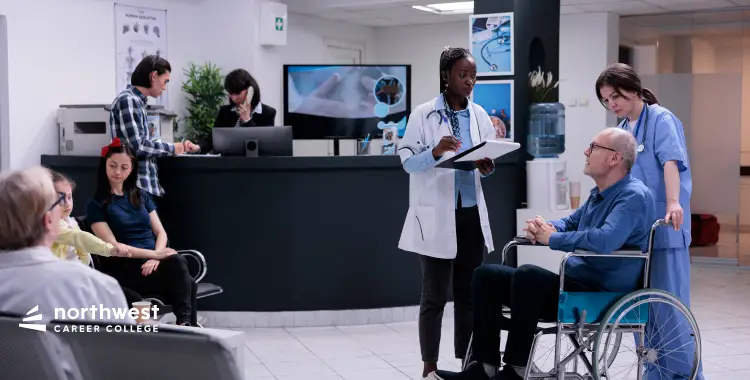How Healthcare Administrators Can Improve Patient Satisfaction
- March 12, 2024
- 4.2k views
- 4 min read

Table of Contents
Educating Parents about Preventative Dentistry for Children
Anyone in a medical office knows that improving patient satisfaction is crucial to any medical practice. Every employee is responsible for their part in patient satisfaction, but healthcare administrators are often the MVPs behind the scenes who help make patients feel like VIPs when in the office.
This article will provide specific examples of how healthcare administrators can help increase the office’s patient satisfaction score.
It Starts with a Friendly Face
A warm smile on a friendly face can change someone’s day. Imagine walking into a hospital or medical office and always being greeted by an administrator who is happy, friendly, and excited to see you! How good would you feel? If you answered, “Great,” you are like most patients.
As a healthcare administrator, it is your job to encourage your front office staff to wear smiles like they are part of their uniform. Patients who come to your facility are typically stressed and overwhelmed, so medical administrators must be approachable and helpful and convey a feeling of warmth to promote a positive patient experience.
Patients remember their positive (or negative) interactions with staff more than they remember your forms, paperwork, or if the doctor got the correct diagnosis. The check-in process is one of the most essential things in your control to improve the patient experience.
Streamline the paper trail.
Speaking of paperwork… This can be one of the most frustrating parts of the patient experience. Nobody enjoys filling out page after page of paperwork, especially when some information is repetitive or has been collected previously. Whenever possible, streamline the process.
The “paperwork experience” can be improved by going digital and allowing patients to complete their paperwork before the office visit. Doing so allows them to quickly check-in and relax in the waiting area as they prepare for their appointment.
Additionally, take the time to review your intake paperwork and look for opportunities to reduce repetition or eliminate forms. Often, forms are implemented for a specific purpose but kept long after that purpose is no longer relevant. “That’s how it’s always been” is not a reasonable justification for keeping a cumbersome process in place.
Regularly review your intake forms and ensure that everything you ask the patient to fill out is worth their time to complete and your time to collect. When in doubt, consult with other administrators and physicians to see if they think that paperwork has value.
Even if you just eliminate one or two fields from a form you need to retain, that can save a lot of time when you factor in how many patients complete that form each year. Imagine the time savings that could come from combining two duplicative forms…or eliminating an entire form that is no longer needed!
Focus on delivering timely care
Nothing is more frustrating to a patient than arriving “15 minutes before your appointment” (as requested by the office), only to wait for over 30 minutes before they are taken back to an exam room.
Most medical practices try squeezing too many appointments into a given day, but just because it is common does not mean it is appropriate or unavoidable. This practice is similar to overseating an airplane. While this practice frustrates travelers, it infuriates people awaiting a doctor’s appointment.
In addition to overly optimistic scheduling, there is a frequent lack of communication between healthcare administrators and patients regarding adjustments to the schedule. Offices that proactively notify patients that the provider is running behind display respect for the patient’s time and autonomy to make decisions about how better to use the time than sitting in the waiting room.
As a healthcare administrator, it is in your power to help improve this aspect of the patient experience every day!
Conclusion.
There are numerous other ways that healthcare administrators can improve the patient experience. However, the basics are often the easiest to overlook but are the most important to get right. Greeting the patient with a warm and welcoming smile, reducing unnecessary paperwork burden, and ensuring proactive communication regarding schedules are three simple ways healthcare administrators can vastly improve the patient experience in their office.
What other ideas do you have about how you can improve the patient experience as a healthcare administrator?





